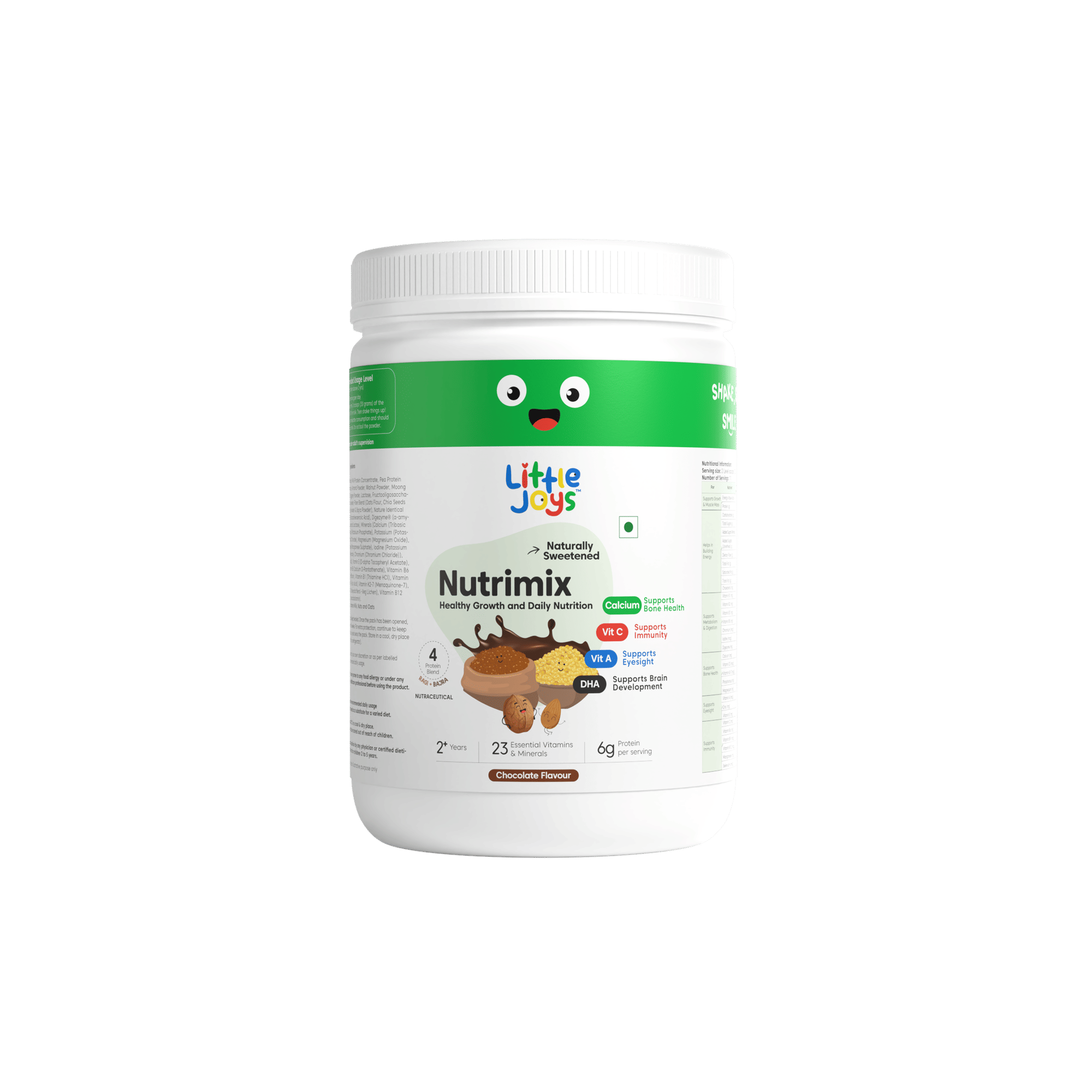Ragi vs Bajra for Kids: Which Millet Is Better?
Confused between ragi and bajra for your child? This guide breaks down which millet is better for kids, how both support growth and bone health, and what to do if your child doesn’t eat them. Learn why Little Joys Nutrimix (with ragi + bajra) is a smart, mom-approved nutrition backup.

Looking for the best “millet for kids” option? Let’s compare Ragi vs Bajra for kids, understand what each brings to the table, and see why both are important — plus what to do if your child doesn’t favour either (hint: supplement!).
What are these millets and why should kids eat them?
Understanding Ragi and Bajra as children’s nutrition foods
- Ragi (finger millet) is a traditional Indian grain known for its high calcium & fibre content.
- Bajra (pearl millet) is another ancient grain rich in iron, protein and minerals
- For growing children—who need strong bones, good digestion, energy, immunity—millets like these are smart alternatives to refined grains.
Ragi vs Bajra: Side-by-Side for Kids
Key nutrients and how they help your child
What this means
- If your child needs more bone-strength support (maybe less dairy, or picky eating) → Ragi is especially helpful.
- If your child is a bit low on energy, iron, or growing fast → Bajra brings those strengths.
- Best of all: using both millets gives a balanced nutrition mix rather than picking “one is better than the other”.
How to Include Ragi & Bajra in a Kid-Friendly Way
Practical, fuss-free recipes kids will like
- Ragi porridge with milk + banana or jaggery. (Good for breakfasts)
- Bajra rotis or khichdi (easy for lunch/dinner)
- Mixed millet pancakes/cheela combining ragi & bajra flour for variety.
Sneak in millets by mixing with their favourite foods rather than presenting as “new grain”.
Tip for Indian moms (ages 25-40)
→ Introduce one millet item per day instead of switching everything at once.
→ Praise the “new flavour” or “special breakfast” rather than label it “healthy grain” (kids resist that).
→ Pair with a fun dip or topping (yoghurt, fruit) to increase appeal.
What If My Kid Refuses Both Ragi & Bajra?
When natural foods alone don’t cut it
Sometimes, despite best efforts:
- The child is super picky and rejects millet texture or taste.
- The child has dietary restrictions (vegetarian, limited dairy) that reduce intake of calcium/iron/protein.
- The schedule or locale makes it hard to cook new millet recipes every day.
Solution: Use a trusted supplement that supports what the millets would offer. For example: Little Joys Nutrimix (which includes both Ragi & Bajra) offers a convenient backup. It means you are not relying only on kids eating millets—they get the nutrients via the mix. It fills the gap while you continue encouraging real food intake.
How Little Joys Nutrimix Supports Kids’ Nutrition
Here’s how Little Joys Nutrimix helps:
- Contains both Ragi & Bajra (so you get the bone-support from ragi + iron/protein from bajra) in one easy mix.
- Ideal for kids who resist plain millets — you can mix it into milk, porridge, smoothies.
- Saves you the pressure of prepping separate millet dishes daily.
- Works alongside meals, not instead of them: you still serve real food, but Nutrimix gives coverage on days meals fall short.

FAQs
Q: Which millet is better for kids—ragi or bajra?
A: Both are excellent; ragi is especially strong for calcium & bone health, bajra gives more iron & protein. So the best choice is both, in rotation, rather than picking just one.
Q: Can a child thrive eating only ragi or only bajra?
A: Possibly yes, if meals are carefully balanced and varied. But realistically, kids may reject one or not eat enough. Supplementing (for example with Little Joys Nutrimix) ensures the nutritional bases are covered.
Q: How much ragi or bajra should I give my child?
A: There’s no single “grams per day” for every child—but aim to replace one usual grain (rice/wheat) meal per day with a millet dish (ragi or bajra) plus other foods (vegetables, lentils, dairy). On days this doesn’t happen, Nutrimix acts as a backup.
Q: Are millets safe for kids with digestion issues?
A: Yes—with a caveat. Millets have more fibre and some anti-nutrients (like phytic acid) so introduce gradually. Soaking/sprouting helps. If still tricky, the Nutrimix option smooths the way.

🌾6g of protein per serving of Nutrimix, essential for kids aged 2-6 for healthy growth & development.
🚫 No refined sugar or maltodextrin. Naturally sweetened with dates and jaggery.
⬆️ Height growth with plant-based protein sources like moong dal, peas & brown rice.
🛡️Boosts immunity with superfoods like ragi & bajra and 23 vitamins & minerals.
💪🏼 Ensures healthy weight gain with the goodness of almonds and walnuts.
🦴 Calcium to help build strong bones and DHA (Omega3) for brain development.
Final Thoughts
Choosing between Ragi vs Bajra for kids doesn’t have to be a tough call. The smart answer: include both. Each brings unique strengths that support growth, bone health, immunity and more. But recognising that real life is busy, kids are picky, and meals don’t always hit all nutrients - using a reliable mix like Little Joys Nutrimix gives you peace of mind.
So: serve millet meals when you can, rotate ragi and bajra, and use Nutrimix on the days you need that extra “safety net”. That’s how you help your child grow strong, healthy, and happy.
